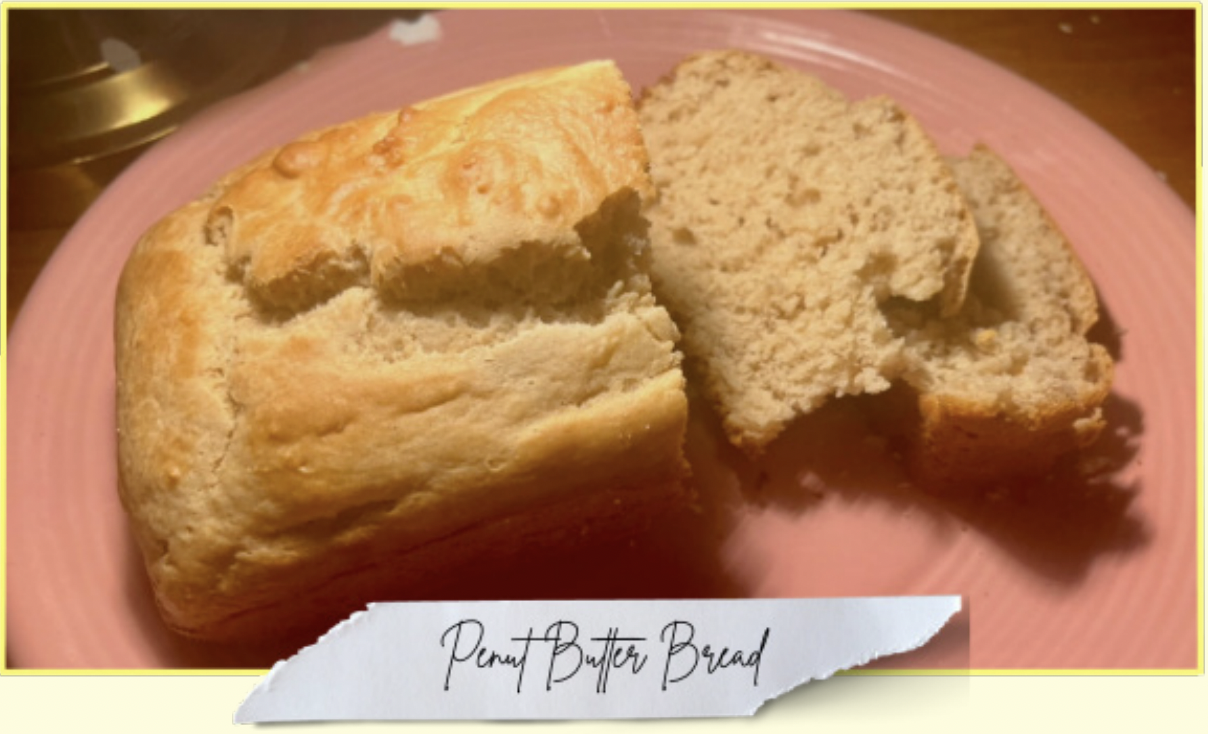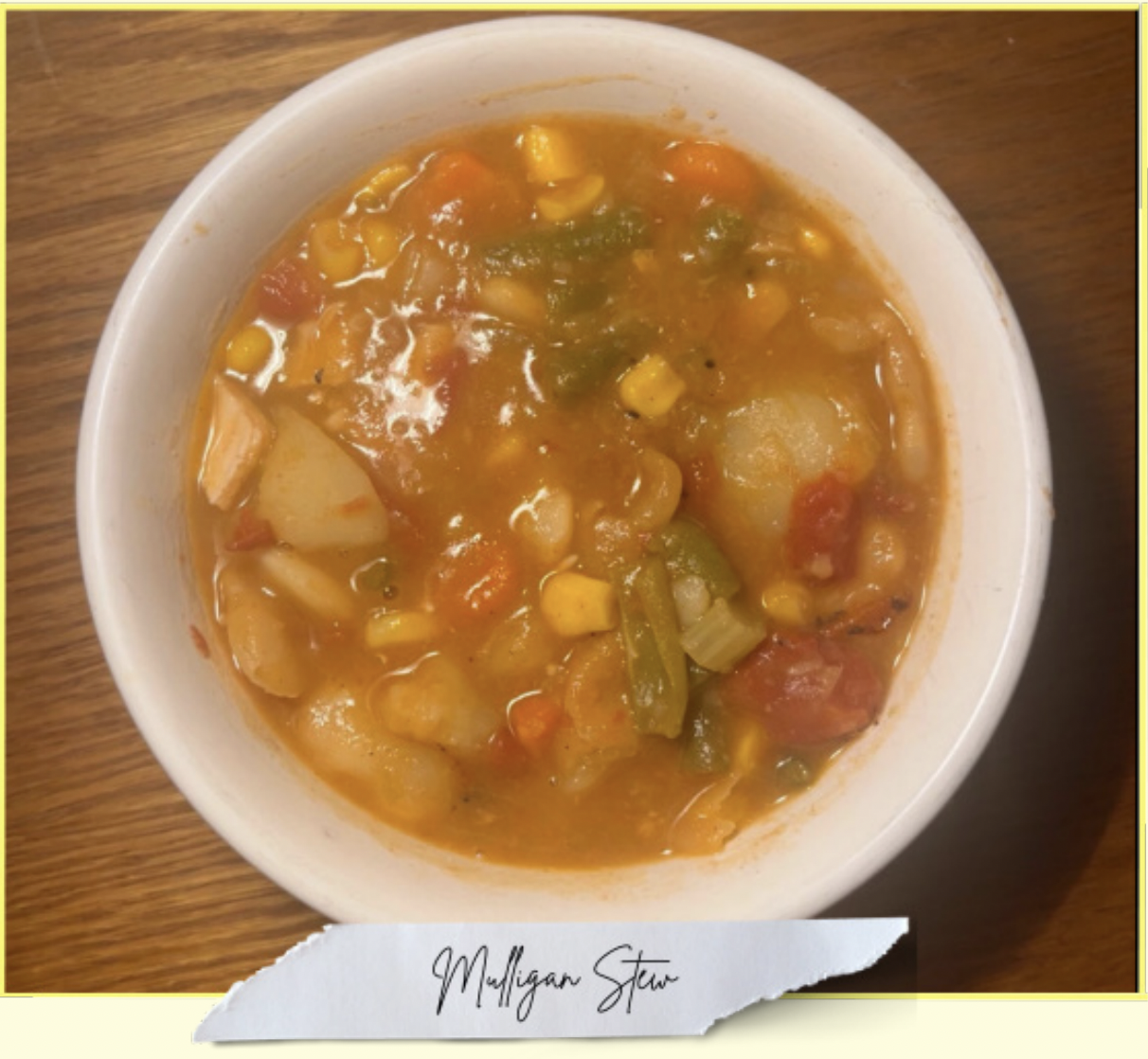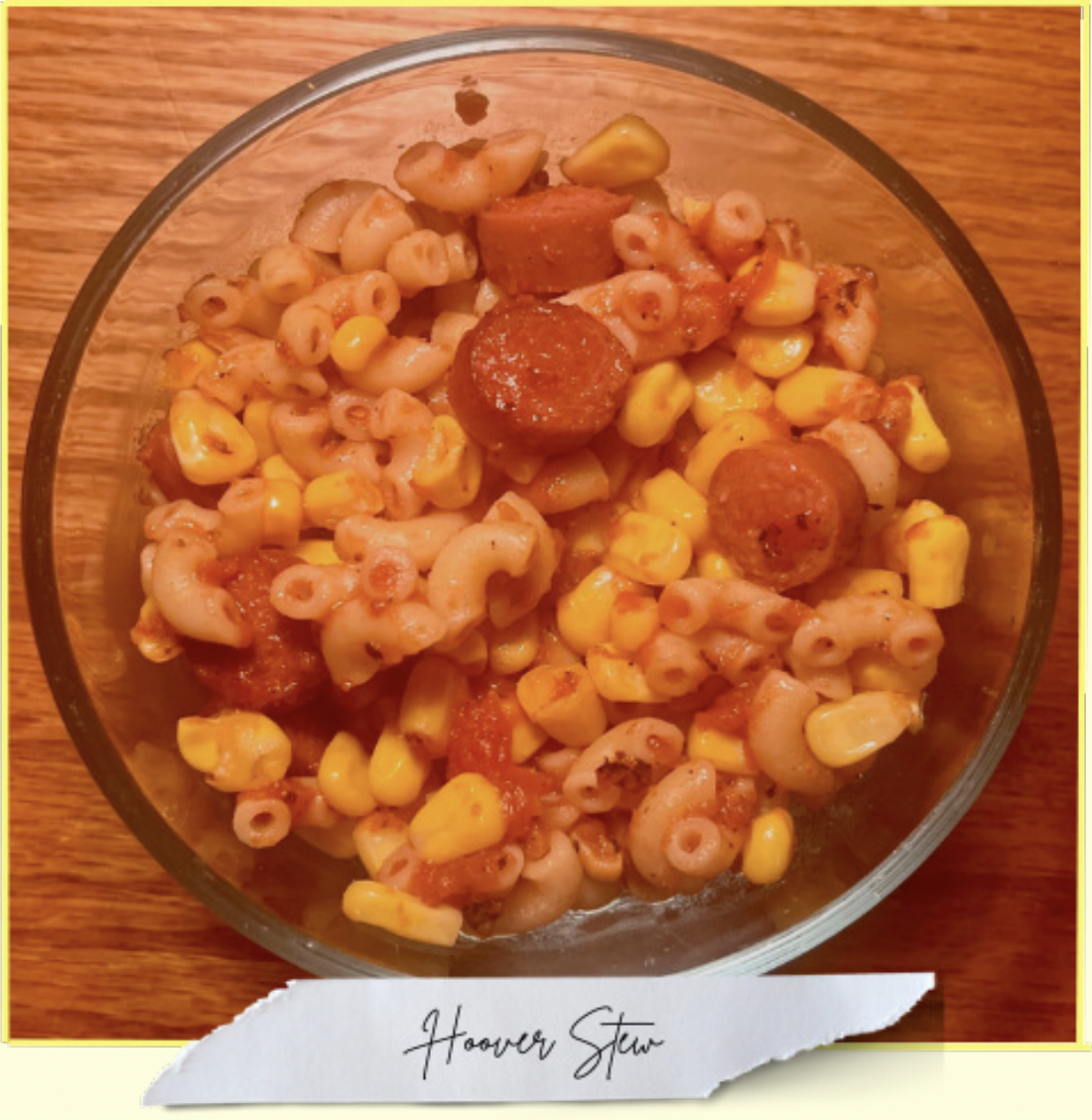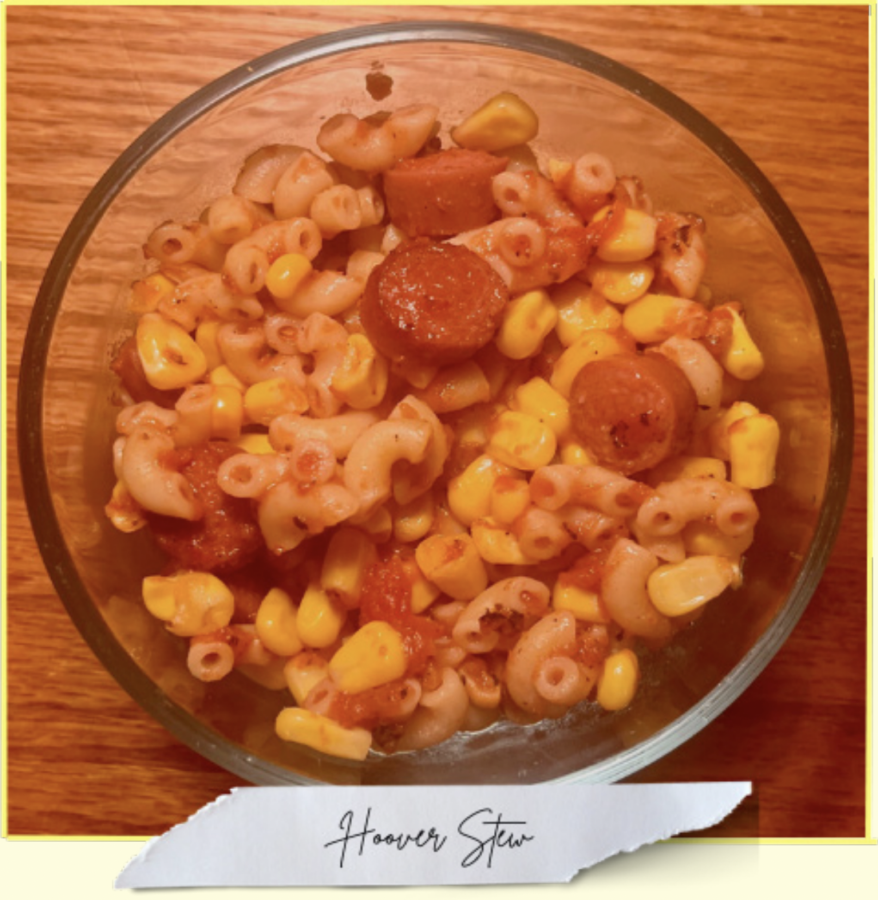Great Depression cooking
February 26, 2023
The Great Depression was a decade-long downward spiral for economics worldwide. Declination started in the United States, where the effects were not easy to ignore. People dealt with severe unemployment, decreased output rates and deflation. This period in history affected even the bare minimum of necessities, like food accessibly.
According to the Franklin D. Roosevelt Presidential Library and Museum, during the Great Depression, 25 percent of the workforce was out of labor. Families struggled to meet their needs, and many could not afford the staples that they used to.
Sugar, coffee, pork, fish, butter, eggs and cheese were all heavily rationed during this period. Non-perishable items were in high demand as many people lost their homes and markets began to shut down.
Millions of people relied on soup kitchens for the only food they would receive. However, some still found their way to make time in the kitchen and keep food on the table for their families. Those who did were met by handfuls of challenges but still prevailed.
With the limited amount of ingredients families had, they developed their own recipes, which spread like wildfire to poor people in need of something to eat.
Peanut Butter Bread
One of the most common staples during the Great Depression was peanut butter bread. Most bread requires yeast or at least eggs, but not this one. Every ingredient in the bread can last years on its own and is inexpensive, making it great for people living through the depression.
Peanut butter bread was first notably showcased in 1932 after being published in the Five Roses Flour Cookbook. Consisting of only six ingredients, this recipe is easy to follow and surprisingly good.

Other than the obvious peanut butter, the bread consists of flour, milk, sugar, baking powder and a pinch of salt. It is easiest to warm the milk and peanut butter, combine the two and then add them to the dry ingredients so that everything can be easily mixed.
I was a little worried about jumping in to make this recipe. There is no butter or eggs and even though I knew logically peanut butter can be a great binding agent, I was not completely sold on the idea of it being the main source of fat in a baked good.
On top of that, peanut butter is the only source of flavor in this, and I was skeptical that it would be bland.
After preparing the dish, I can say with certainty that my worries were futile. The bread is soft, and the flavor is subtle but distinguished. I cannot wait to make it again.
Mulligan Stew
Mulligan stew, otherwise known as “hobo stew” is survival food at its finest. During the Great Depression, homeless people were often referred to as hobos as they searched for odd jobs to make ends meet.
The homeless also formed campsites and places of refuge commonly nicknamed “hobo jungles” and the predicator of homeless shelters, Hotel De Gink, came to be. Places like these are where Mulligan stew was commonly prepared.
In 1900 “The Sunday Oregonian” published a piece titled “Weary Willie on His Travels” where the process of making Mulligan stew is described as such, “Five or six hobos join in this. One builds a fire and rustles a can. Another has to procure meat; another potatoes; one fellow pledges himself to obtain bread, and still another has to furnish onions, salt, and pepper. If a chicken can be stolen, so much the better. The whole outfit is placed in the can and boiled until it is done.”

Throughout the Great Depression, increased homeless populations lead to more and more people chipping in to make large pots of Mulligan stew with each day’s meal slightly different than the day before.
According to Chef Billy Parisi, relatively any cut of beef was commonly used along with carrots, onions, potatoes, navy beans, water, and salt.
As the recipe developed in later years and people had a bit more money, ingredients such as celery, lima beans, green beans, corn, garlic, and peas became more popular.
For my batch of the stew, I used beef stew meat, chicken breast, onions, potatoes, carrots, celery, lima beans, green beans, corn, and tomatoes. I had these ingredients on hand, and figured, what better way to truly honor the recipe than to simply use whatever I have lying around?
The preparation was simple, and I left it to boil for about an hour and a half, eventually deciding it was done. Because stew is always better the next day, I decided to wait it out.
In all honesty, it was just all right, which was better than I had anticipated. It seemed like a dish people would endearingly call slop.
It is survival food, and it does its job well. If somebody wanted to, they could absolutely make it taste wonderful, as stew is hardly ever terrible.
The reason I chose not to attempt that and just tossed my somewhat random array of ingredients into the pot is because that is not what this dish is about. When people made this, they were worried about how they would make it to the next day. It did not even matter what it tasted like half the time.
As somebody who loves cooking, I put a lot of pressure on myself to make dishes over the top. Plating takes up an excessive amount of my time. With every recipe I cook, I am searching for a way to make it better.
With this, I felt like there was no way to make it amazing, pretty, or special, and for the first time in a long time, the pure joys of cooking came back to me.
Regardless of what felt like a lack of effort on my behalf, my father loved it.
Poorman’s Meal
Great Depression Cooking is a YouTube channel that I watched when I was first learning how to cook. Clara Cannucciari ran the channel for years, uploading recipes her family made themselves when they lived through the depression.
One of the most memorable videos of hers that I watched was “Poorman’s Meal,” centered around potatoes and hot dogs because they were cheap.
Throughout the video, Clara reminisces about growing up in the Great Depression. “You wanna know about the depression? I quit high school because I couldn’t afford socks. Couldn’t afford anything to wear, but we survived.”
I think one of the main reasons Poorman’s meal stuck with me is because my father makes a similar variation of it with different sausages.
Like most meals from the Great Depression, this recipe was simple as well. Peel and cube the potatoes, fry them about halfway through and add in some chopped onion. When it is almost done, throw in sliced hot dogs and two tablespoons of either salsa or tomato sauce.
This one also tasted better than I had expected, but I still would not call it good. The ingredients blend enough for it to be a coherent dish, but nothing more. However, I had expected more of a mix-matched combination of ingredients.
Dandelion Salad
In another one of Clara’s videos, she makes dandelion salad, which I had heard of before I stumbled across her channel. My grandmother used to make it. She raised 13 children and lived through the depression enough to feel the effects on her cooking.
In her video, Clara states “They’re cheap, you can get them for nothing. You know, all you need is a little patience and work.” and she is right. Picking dandelions from the backyard surely is an inexpensive way to make a salad.
Because I am writing this in January, there is no way for me to remake this salad now. However, I have had it before. The dandelion leaves are picked, the flower stems are removed and then they are washed.
People add their own dressings and toppings and whatever else makes it their own dandelion salad. Regardless of what is added, it reminds me of arugula, and considering it is free, it is great.
Hoover Stew
Hoover stew is best described as a concoction. The ingredient list consists of macaroni noodles, hot dogs, corn, and canned tomatoes.
The dish received its name after being common within homeless shelters or shantytowns, nicknamed Hoovervilles. Hoovervilles got their name from the president at the time of the Great Depression, Herbert Hoover.
There is nothing special about the preparation process within this recipe either. After the noodles are boiled, all the other ingredients are added to the pot, left to simmer for about five minutes and then served.

This one was bad. I was grossed out by the thought of it, but I tried to have an open mind like with the others. Unfortunately, that was not a good idea.
I could not even get through five bites of it. Herbert Hoover really knew how to make food stretch. I cannot imagine anybody asking for seconds with this.
However, it was definitely food so, let credit be given where it is due.
Prune Pudding
Eleanor Roosevelt was the First Lady during the Great Depression. She took it upon herself to ensure all the food served within the White House was inexpensive and fit their budget. When the American populace was struggling, so did the leaders.
Prune pudding was one of the most frequently served dishes at the time because prune production is cheaper than a lot of fruits while still being packed with nutrients.
This recipe that spread to U.S citizens consisted of prunes, sugar, cornstarch and occasionally cinnamon or lemon juice.
It is essentially jam. The preparation and cooking process was cut dry. Everything is boiled and then poured into individual bowls then left to cool.
This recipe was insanely sweet, but I did not hate it. Strangely enough, I stand by and love prunes. With less sugar, it would have been better, but in a time where dishes like this needed to stretch, the extra sugar goes a long way.


